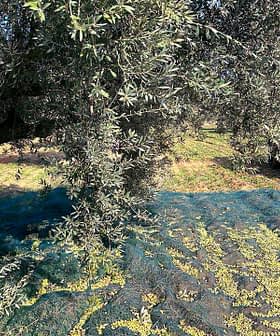
The International Olive Council’s (IOC) forecast for world olive oil production in 2012/13 has been pared down 8 percent to 2.5 million tons amid evidence the Spanish harvest will be even lower than expected.
Last November the IOC predicted 2.71 million tons in world production this season (October-September), down from 3.4 million in 2011/12, and that Spain’s harvest, decimated by adverse weather, would be down 49 percent on the previous crop year, to just 820,000 tons.
But in its February newsletter, published on Friday, the IOC acknowledged that Spanish olive oil production in the first four months of 2012/13 was already down 62 percent, according to Spain’s Olive Oil Agency.
As the world’s leading producer, Spain has a big impact on the global total, thus the 2012/13 estimates for the European Union (E.U.) and world output have been revised to 1.52 and 2.5 million tons respectively.
Morocco and Tunisia are enjoying good harvests, but production in Italy and Greece will be lower than operators tipped late last year, the IOC said.
Consumption
The council also acknowledged that, according to recent figures from the Spanish agriculture ministry, “in the current crisis setting olive oil consumption by Spanish households dropped 14 percent in the last four months of 2012 while consumer prices rose by an average 10 percent.”
However, it did not revise its global consumption forecast for this year of 3.1 million tons, down from 3.2 million in 2010/11.
Imports up a third in Japan, a quarter in Australia
Meanwhile, imports of olive oil and olive pomace oil grew 35 percent in Japan, 24 percent in Australia, 23 percent in Brazil, 13 percent in Russia, 10 percent in China, 8 percent in the United States and 3 percent in Canada, in the first quarter of 2012/13 crop year (October – December).
Spain’s exports inched up 2 percent in non‑E.U. countries — chiefly in China, Brazil, Japan and India — in October and November, but it sold less to E.U. countries.
Figures for the same two months show a major 119 percent rise in extra E.U. imports (from the rest of the world into the E.U.) to nearly 24,400 tons. Imports from Tunisia (17,807 tons) and Morocco (5,014 tons) “made their mark” on this increase, the IOC said, noting Morocco signed a free trade agreement with the E.U. in October.
Discrepancy in intra‑E.U. trade figures
Theoretically they should be equal, but the breach is widening between the imports and exports totals for olive oil and olive pomace oil within the E.U.
The IOC said intra‑E.U. imports (which are mainly virgin grade) for October and November fell 7 percent on the previous season, from 175,985 to 164,559 tons, while exports between E.U. countries slid 15 percent.
“Notably, the gap between intra-EU import and export figures has gone up from 10,455 to 24,033 tons for these first two months. Although there are always discrepancies in international trade figures, it will be necessary to track how this gap evolves over the coming months,” it said.
Producer prices had been below costs
Producer prices in Spain have undergone “a reasonable, logical increase.”
“Olive Oil Agency surveys have in fact revealed that they have been excessively low in recent seasons and have not managed to cover production costs,” the IOC said.
Prices have also gone up in Italy and Greece. In the former, ex-mill prices for extra virgin olive oil rose from €2.61/kg in the last week of November to €3.19/kg in the last week of February — growth of 35 percent on the same period a season ago.
And in Greece, prices gained 34 percent, climbing from €2.04/kg in last week of December to €2.46/kg in the last week of February.
The gap between the price of refined olive oil and extra virgin olive oil was about €0.29/kg in Spain and €0.36/kg in Italy.
United States trade figures
The IOC also included analysis of the U.S. market, which “holds top position in the olive oil and table olive import ranking”, and where it has run campaigns to promote olive oil and olive consumption which “have had a very significant impact.”
In 2011/12, the U.S imported just over 317,000 tons of olive oil, up 8.6 percent on the previous season.
About 65 percent of these imports were virgin grade, of which Italy (103,250t) and Spain (21,260t) were the main pre-packed (<18kg) suppliers and Spain (27,140t) and Tunisia (19,424t) the main bulk suppliers.
Italy was by far the main non-bulk supplier of refined olive oil (40,880t) and edible olive pomace oils (3,540t), while Spain (29,000t) and Tunisia (11,400t) led bulk supplies in refined, and Spain dominated in bulk edible pomace (8,500t).
Incidentally, Canada and the Dominican Republic , which do not produce olive oil, were suppliers of edible pomace oil: Canada in the bulk category with 443 tons and the Dominican Republic third, after Italy and Spain, in packed, though with a mere 236 tons.
World trade in table olives
Imports of table olives were up 16 percent in Canada, 13 percent in Australia, 8 percent in Brazil and 1 percent each in the U.S. and Russia in the first three months of the 2012/13 (October – December 2012).








